 |
 |
 |
| |
Co-morbidity and HIV: What Matters to Patients ?
- IAS Symposium - Growing old with HIV: Co-morbidities and ageing (CME)
|
| |
| |
Download the PDF here
Co-morbidity and HIV: What matters to patients?
Richard HARDING, King's College London, United Kingdom
Immunosenescence and HIV: Mutual interactions?
Nicholas T. FUNDERBURG, The Ohio State University - School of Health and Rehabilitation Sciences, United States
Immunoscenescence and HIV: mutual interactions? - (07/26/21)
Co-morbidities in people living with HIV: Host- or HIV-associated?
Lene RYOM, CHIP, Centre of Excellence for Health, Immunity and Infections, Rigshospitalet, Denmark - pdf attached
SUMMARY
This session, chaired by Julie Ake, examined different factors (HIV related, host lifestyle and ART toxicity/polypharmacy) contributing to the increased risk of non-AIDS related comorbidities in PLWH, from the lab to the clinical practice.
HIGHLIGHTS
Nicholas Funderburg showed that monocyte-derived macrophages (MDMs) isolated from PLWH on ART present phenotypic and functional abnormalities, including metabolic and mitochondrial dysfunctions. MDMs from PLWH may present also differential trained immunity, demonstrated by the different gene patterns after exposure to TLRs. The exposure to ART and HIV drives epigenetic changes in MDMs changing their transcriptional and functional profile. These factors may cause pro-atherogenic MDM phenotype in PLWH. Lene Ryom highlighted the importance of lifestyle and host factors for co-morbidities, along with ART toxicity and HIV-related factors. Some co-morbidities (HTA, diabetes, dyslipidaemia) appear concomitantly suggesting the same underlying pathogenesis. Effective early interventions against common factors may have a wide-ranging multimorbidity impact. It is essential a multidisciplinary approach focusing on systematic risk assessment and management, but also more clinical studies to determine the most effective interventions. Richard Harding emphasized that person-oriented care is crucial to manage physical, psychological, social and spiritual concerns.
All speakers highlighted the importance of a patient-centered model, with multidisciplinary teams and a systematic approach (including common clinical measurements of organ dysfunctions) with the aim to improve the management of PLWH. Despite that some countries have already started to build HIV comorbidities clinics, there is still no data supporting which care model is more appropriated. It is also required to define the correct patient-reported outcomes (PROs) to ensure measuring what matters to the patient. Finally, early ART is able to reduce inflammatory and immune perturbation, but some dysfunctions may still occur, suggesting also an effect of ART toxicity.
SUMMARY
With the incredible advances made in HIV diagnosis, treatment, retention to care, and prevention, an emerging concern is how to manage comorbidities in the ageing person living with HIV. This session explores biological mechanisms and patient factors for ageing, as well as patient needs that must influence the management process.
HIGHLIGHTS
Nick Funderburg from Ohio State University reports research his group has conducted to answer the question: Does HIV or it’s treatment with ART contribute to the ageing process? The short answer is yes! In a whirlwind summary, Nick explains how monocyte derived macrophages (MDM) in PLHIV have different phenotypic, functional and gene expression profiles compared to uninfected people, and can influence pro-inflammatory pathways, coronary calcium scores and immune senescence. Lene Ryom from CHIP in Denmark explores this further, describing specific patient factors that influence the ageing process. These include host/lifestyle factors, HIV related factors and ART itself, which can modify immune profiles and increase comorbidities with toxicities such as weight gain and renal impairment. She discusses the importance of access to care and smoking cessation in reducing cancer risk and improved life expectancy. Richard Harding from King's College London explores what matters to patients, and they really just want to be heard! He highlights pain management as something not done well due to unclear responsibilities but is critically important due to function impairment. Julie Ake then moderates an excellent discussion about personalised management plans based on what the patient cares about most and moving away from one-size fits all strategies.
CRITICAL ASSESSMENT
As clinicians, lets focus on patient centred care. Don’t stop at checking the CD4 count and viral load, ask about physical health, weight, mobility, smoking. Screening for comorbidities is simple and cheap - measure BP, lipids, glucose, protein in urine. Develop a standardised approach to this in your clinic and don’t assume it’s being done by the other doctor in a shared care model. There is a great need to better understand the mechanisms of ageing in PLHIV, at a molecular and patient level, and patient reported outcomes are a very important way to assess what’s important for our patients.
https://theprogramme.ias2021.org/Programme/Session/45
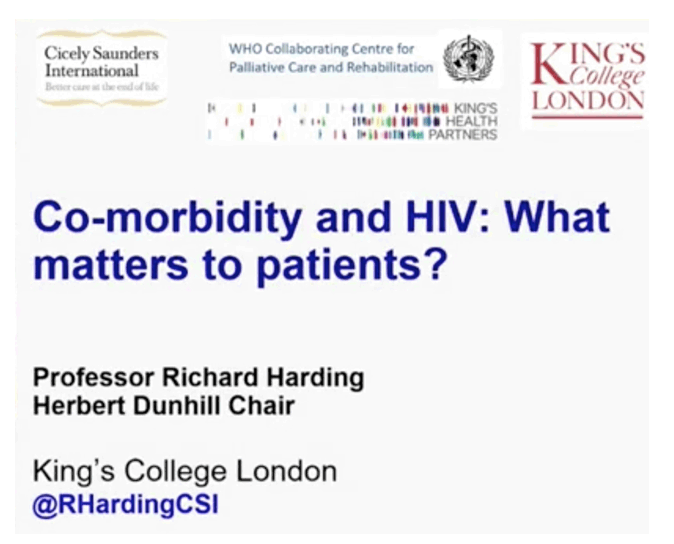
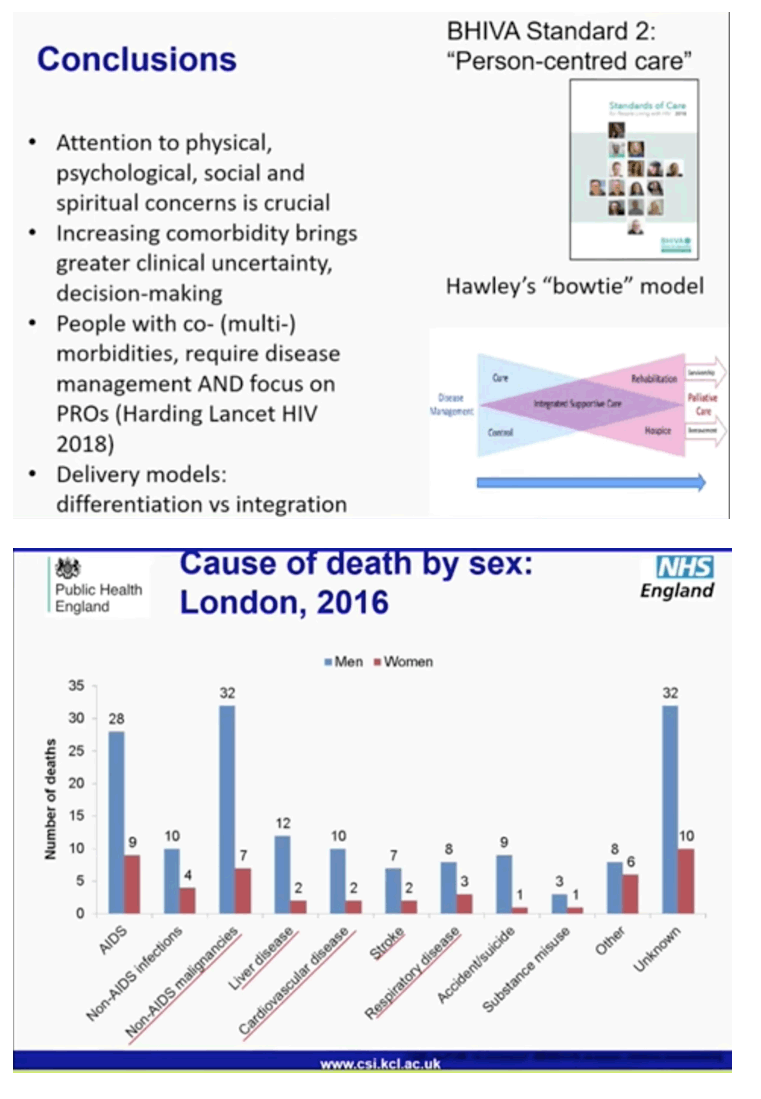
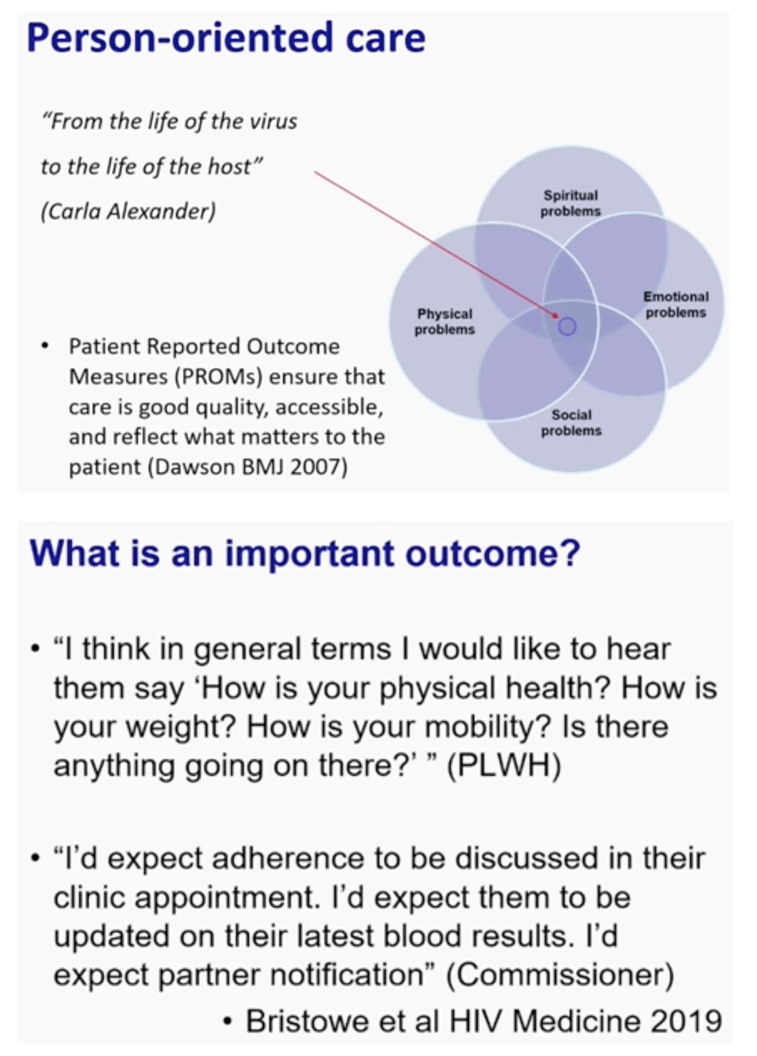

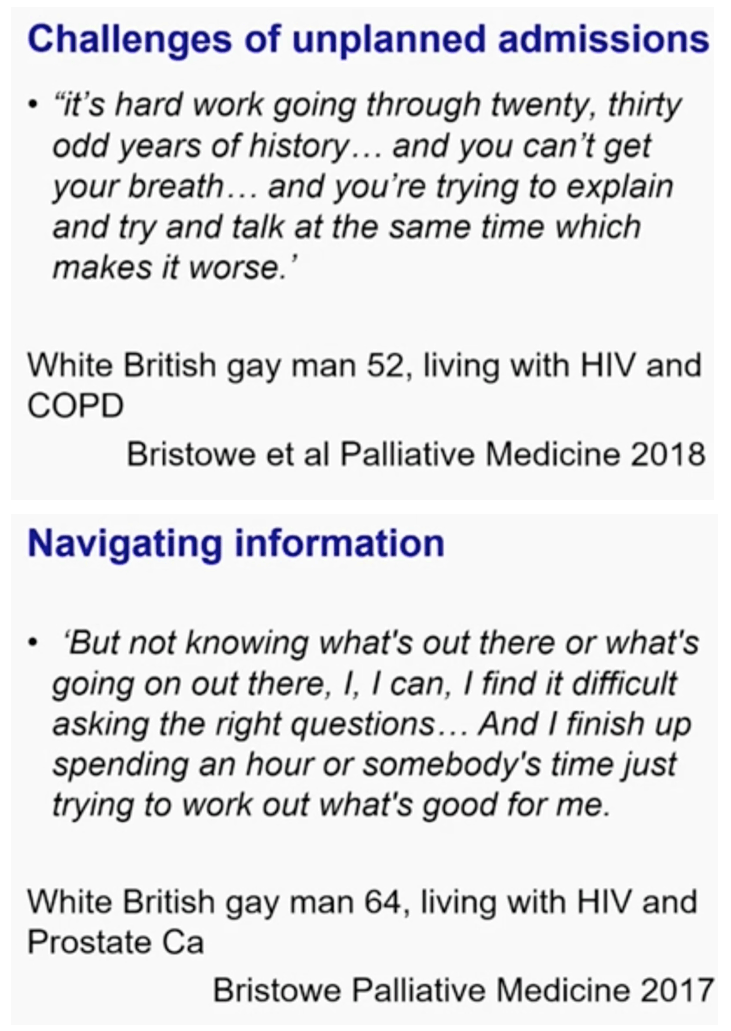
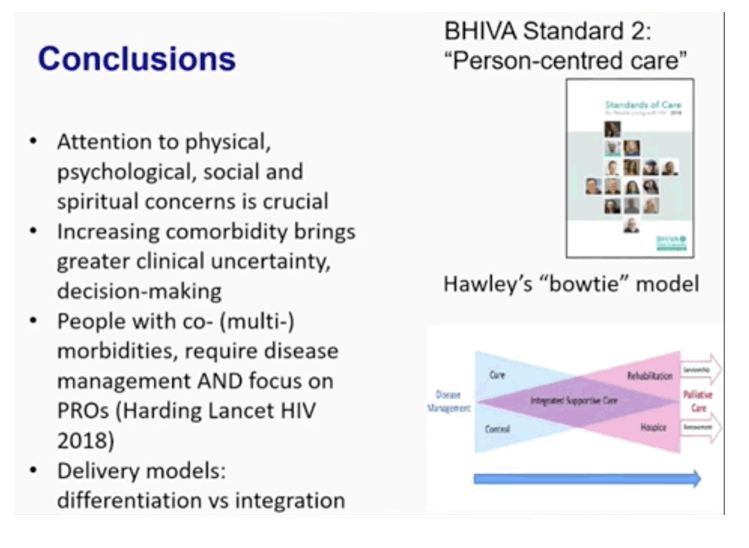
|
| |
|
 |
 |
|
|